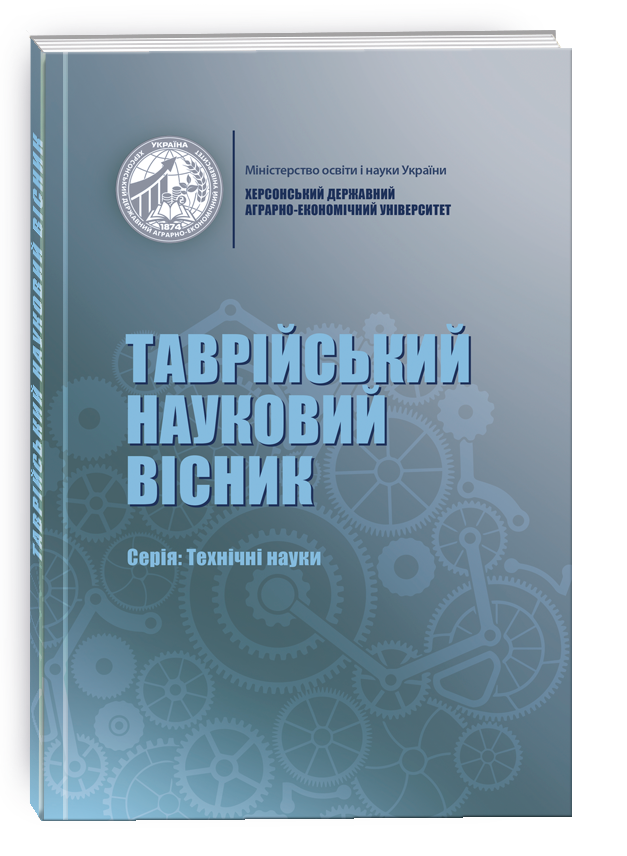INVESTIGATION OF THE INFLUENCE OF THE SUGAR TYPES IN THE MODEL SYSTEMS WITH WHEY PROTEIN HYDROLYSATE ON MAILLARD REACTION
DOI:
https://doi.org/10.32851/tnv-tech.2022.1.15Keywords:
whey, whey proteins, reduction sugars, Maillard reaction, flavoring substancesAbstract
The food industry, in particular the food additive industry, in the production and development of natural flavors and flavoring additives, successfully uses the properties of the products of the Maillard reaction to generate pleasant, desirable flavors and aromas. The nature of the resulting flavors determine the reactions between amino acids and sugar. By changing the type of sugar that reacts with the amino acid, it is once possible to obtain new flavoring substances. Thus, the study of the kinetics of the Maillard reaction and determining the dependence of the sensory characteristics of the final products on the type of sugar used in the reaction is an important issue. The purpose of the work is to investigation of the influence of the sugar types in the model systems with whey protein hydrolysate on Maillard reaction. The following sugars were used: D-xylose, D-glucose, D-fructose, lactose. The reactivity of sugars was assessed by the characteristic kinetic parameters of the Maillard reaction: change in the content of free amino groups and reducing sugars in the samples and change in color (darkening) and change in taste and aroma. As a result of the conducted researches it is established that the greatest reduction of free amino groups occurs in the sample with the addition of xylose, as well as the reduction of the sugar itself in the reaction. The greatest darkening within 45 min of heating is observed in all samples, which is characteristic of the Maillard reaction (melanoidins are formed). The results of the sensory evaluation showed that with the addition of xylose to the hydrolyzate of whey proteins and heating for 25–35 minutes in the aroma and taste dominated by descriptors similar to meat and “umami”; glucose – sweet, caramel and chocolate-like; fructose – caramel and fruit; lactose – caramel. The obtained research results can be used in the development of natural flavors and flavorings.
References
Yeretzian C., Blank I. Palzer S. Process flavourings. In: Flavourings. Production, composition, applications, regulations. Weinheim, Germany : Wiley-VCH, 2007. Pp. 549–572.
Хачатурян Э.Е., Гвасалия Т.С., Якименко Т.П. Двести составляющих реакции меланоидинообразования. Современная наука и инновации. 2014. № 4 (8). С. 22–32.
Meat flavor compositions : patent 3519437 US : A23 1/22. No. 614,036 ; application filed 06.02.1967, publication 07.07.1970.
Cerny C., Brifod M. Efect of pH on the Maillard reaction of xylose, cysteine, and thiamin. Journal of Agricultural and Food Chemistry. 2007. No. 55(4). Р. 1552–1556. DOI: 10.1021/jf062874w.
Flavouring substances and their preparation : patent 836694 GB : A23 L27/215. application filed 07.04.1955, publication 09.06.1960.
Process for the manufacture of meat flavors : patent 3761287 US : A23 L27/215. application filed 23.12.1970, publication 25.09.1973.
van Boekel MA. Formation of flavour compounds in the Maillard reaction. Biotechnology Advances. 2006. No. 24(2). Р. 230–233. DOI: 10.1016/j.biotechadv.2005.11.004
Kerler J., Winkel C., Davidek T. Basic chemistry and process conditions for reaction flavours with particular focus on Maillard-type reactions. In Food flavour technology / eds. A.J. Taylor, R.S.T. Linforth. 2010. Р. 51–58. DOI: 10.1002/9781444317770.ch3.
Ames J.M., Guy R.C.E., Kipping G.J. Effect of pH and temperature on the formation of volatile compounds in cystein/reducing sugar/starch mixtures during extrusion cooking. Journal of Agricultural and Food Chemistry. 2001. No. 49/4. Р. 1885–1894. DOI: 10.1021/jf0012547.
Aroma characteristics of extruded wheat flour and wheat starch containing added cystein and reducing sugar / Bredie W.L.P. et al. Journal of Cereal Science. 1996. No. 25. Р. 57–63. DOI: 10.1006/jcrs.1996.0074/pdf.
Mottram D.S. The Maillard reaction: source of flavour in thermally processed foods. In: Flavours and fragrances / eds. Berger R.G. Berlin, Heidelberg : Springer, 2007. Р. 269–284. DOI: 10.1007/978-3-540-49339-6_12.
Enzymatic hydrolysis of flaxseed (Linum usitatissimum l.) protein and sensory characterization of Maillard reaction products / Wei C.K. et al. Food Chemistry. 2018, 263, 186–193. DOI: 10.1016/j.foodchem.2018.04.120.
Zha F., Yang Z., Rao J., Chen B. Gum arabic-mediated synthesis of glycopea protein hydrolysate via Maillard reaction improves solubility, flavor profile, and functionality of plant protein. Journal of Agricultural and Food Chemistry. 2019. No. 67(36). Р. 10195–10206. DOI: 10.1021/acs.jafc.9b04099.
De Oliveira Felipi L., de Oliveira A.M., Lemos Bicas J. Bioaroma – perspectives for sustainable development. Trends in Food Science & Technology. 2017. No. 26. Р. 141–153. DOI: 10.1016/j.tifs.2017.02.005.
Shang Y.-F., Cao H., Wei C.-K. Effect of sugar types on structural and flavor properties of peony seed derived Maillard reaction products. Journal Food Process Preserv. 2020. 44:e14341. DOI: 10.1111/jfpp.14341.
Cheese whey processing: integrated biorefinery concepts and emerging food applications / I.K. Lappa et al. Foods. 2019. No. 8. P. 347. DOI: 10.3390/foods8080347.
Храмцов А.Г. Феномен молочной сыворотки. Санкт-Петербург : Профессия, 2011. 804 с.
van Boekel M.A.J.S. Kinetic aspects of the Maillard reaction: a critical review. Nahrung. 2001. No. 45. Р. 150–159. DOI: 10.1002/1521-3803(20010601)45:3<150::AIDFOOD150>3.0.CO;2-9.
Simplified kinetic scheme of flavour formation by the Maillard reaction / Jousse F. et al. Journal of Food Science. 2006. No. 67. Р. 2534–2542. DOI: 10.1111/j.1365-2621.2002.tb08772.x.
Kinetic study on the Maillard reaction. Consideration of sugar reactivity / Laroque D. et al. Food Chemistry. 2008. No. 111(4). Р. 1032–1042. DOI: 10.1016/j.foodchem.2008.05.033.
Синенко Т.П., Фролова Н.Е. Ферментативний гідроліз сироваткових білків молока. Вісник аграрної науки Причорномор’я. 2020. № 1 (105). С. 79–86. DOI: 10.31521/2313-092X/2020-1(105)-10.
Синенко Т.П., Фролова Н.Е. Моделювання та оптимізація процесу ферментативного гідролізу сироваткових білків. Вісник Львівського торговельно-економічного університету. Технічні науки. 2021. № 25. С. 111–119. DOI: 10.36477/2522-1221-2021-25-15.
Martins S.I.F.S., Jongen W.M.F., van Boekel M.A.J.S. A review of Maillard reaction in food and implications to kinetic modelling. Trends in Food Science & Technology. 2000. No. 11. P. 364–373. DOI: 10.1016/S0924-2244(01)00022-X.
Исследование влияния реакции меланоидинообразования на содержание аминокислот в модельных пищевых системах / Почицкая И.М. и др. Вопросы питания. 2018. № 5. С. 95–101. DOI: 10.24411/0042-8833-2018-10058.
Wong K.H., Abdul Aziz S., Mohamed S. Sensory aroma from Maillard reaction of individual and combinations of amino acids with glucose in acidic conditions. International Journal of Food Science & Technology. 2008. No. 43. Р. 1512–1519. DOI: 10.1111/j.1365-2621.2006.01445.x.







